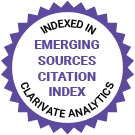JMIR Research Protocols
Protocols, grant proposals, registered reports (RR1)
Editor-in-Chief:
Amy Schwartz, MSc, Ph.D., Scientific Editor at JMIR Publications, Ontario, Canada
Impact Factor 1.4 CiteScore 2.4
Recent Articles

Teens with socially complex needs—those who face multiple and potentially overlapping adversities—are disproportionately affected by several barriers to mental health screening and treatment. Pediatric primary care (PPC) is a typically low-stigmatized setting for teens that is visited at least annually. As such, implementing digital mental health tools (DMH), as low-intensity treatments in PPCs may increase the reach of such tools for teens with socially complex needs.

Atrial fibrillation (AF) is a chronic cardiovascular condition with a lifetime risk of 1 in 3 and a prevalence of 3% among adults. AF’s prevalence is predicted to more than double during the next 20 years due to better detection, increasing comorbidities, and an aging population. Due to increased AF prevalence, telerehabilitation has been developed to enhance patient engagement, health care accessibility, and compliance through digital technologies. A telerehabilitation program called “Future Patient—telerehabilitation of patients with AF (FP-AF)” has been developed to enhance rehabilitation for AF. The FP-AF program comprises two modules: (1) an education and monitoring module using telerehabilitation technologies (4 months) and (2) a follow-up module, where patients can measure steps and access a data and knowledge-sharing portal, HeartPortal, using their digital devices. Those patients in the FP-AF program measure their heart rhythm, pulse, blood pressure, weight, steps, and sleep. Patients also complete web-based questionnaires regarding their well-being and coping with AF. All recorded data are transmitted to the HeartPortal, accessible to patients, relatives, and health care professionals.

Rheumatoid arthritis (RA) is an autoimmune disease that affects joints and can have extra-articular manifestations. RA usually tends to be progressive and leads to substantial health care burdens, both in terms of disability and economic costs. Despite the various treatment modalities available, there is still an urgent need for safe and effective medicine based on the pattern of disease presentation. The increasing interest in complementary and alternative medicine has created a demand for extensive research in this area.

The exact cause of penile curvature in hypospadias remains unknown. Resection of the dartos fascia has been observed to straighten the penis, indicating the involvement of the dartos fascia in the superficial chordee. However, the characteristics of dartos tissue in the distal territory of the ventral penile shaft may differ from those in the proximal aspect of the penile shaft.

Losing a loved one to suicide is an event that can have strong and potentially traumatic impacts on the lives of the bereaved survivors, especially regarding their grief, which can be complicated. These bereaved individuals are also less likely to receive social support following their bereavement. However, besides these adverse impacts, growing evidence supports the concept of posttraumatic growth following suicide bereavement. Posttraumatic growth is the personal improvement that occurs as a consequence of experiencing a traumatic or extremely challenging event or crisis. Only 1 systematic review and meta-analysis on posttraumatic growth following suicide bereavement has been conducted; this protocol is for the planned systematic review and meta-analysis update of the original systematic review and meta-analysis, as the original review collected its data in 2018.

There has been a rapid growth in the literature on the design and evaluation of assistive technologies for people with visual impairments; yet, there is a lack of a comprehensive analysis of the existing literature on the classification of immediate-, short-, medium-, and long-term psychosocial impact of assistive technologies on the quality of life of people with visual impairments.

Oral health is a significant indicator of general health, well-being, and quality of life. The prevention of oral health problems requires periodic inspection of the oral cavity. Routine oral health examinations at the individual level appears to be one way to deliver quality oral health care but are too often missed as an opportunity for improved oral health in the nondental health care setting in India. This is because of limited training and inaccessible or lack of specialized oral health assessment tools.


Surgical site infections (SSIs) represent one of the most prevalent and significant complications associated with surgical procedures, often leading to prolonged hospitalization and delayed patient recovery. While recent international consensus guidelines have proposed evidence-based strategies to mitigate SSIs, they fall short in addressing the efficient and interdisciplinary implementation of these measures within the operating theater. Consequently, further research is required to identify and evaluate optimal interdisciplinary organizational approaches for the prevention of SSIs.



Electronic health records (EHRs) have been associated with information overload, causing providers to miss critical information, make errors, and delay care. Information overload can be especially prevalent in medical intensive care units (ICUs) where patients are often critically ill and their charts contain large amounts of data points such as vitals, test and laboratory results, medications, and notes.













